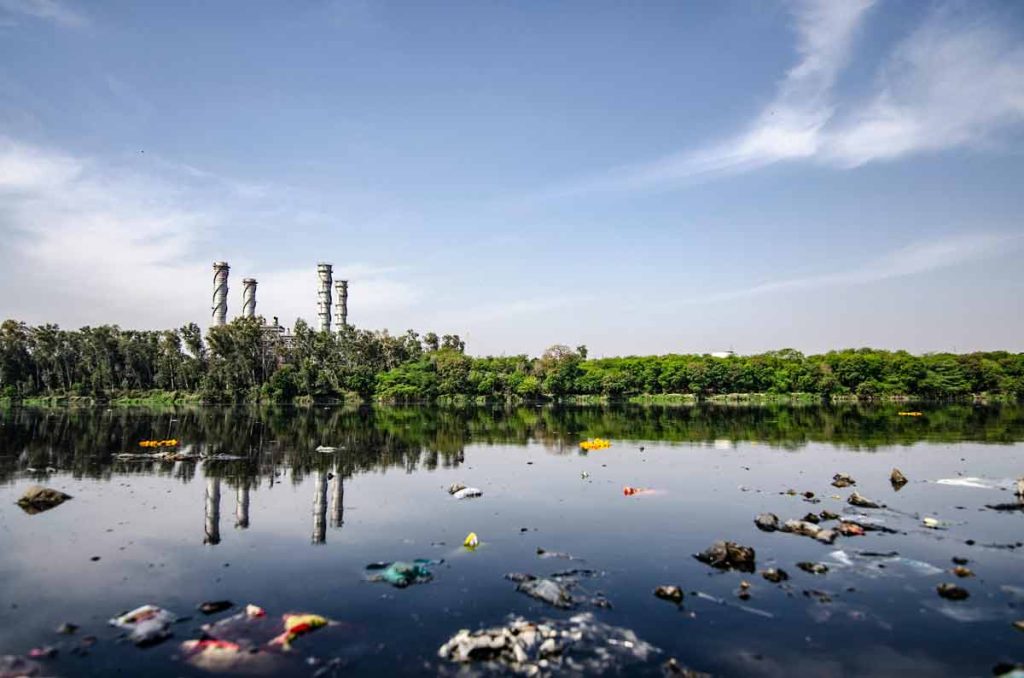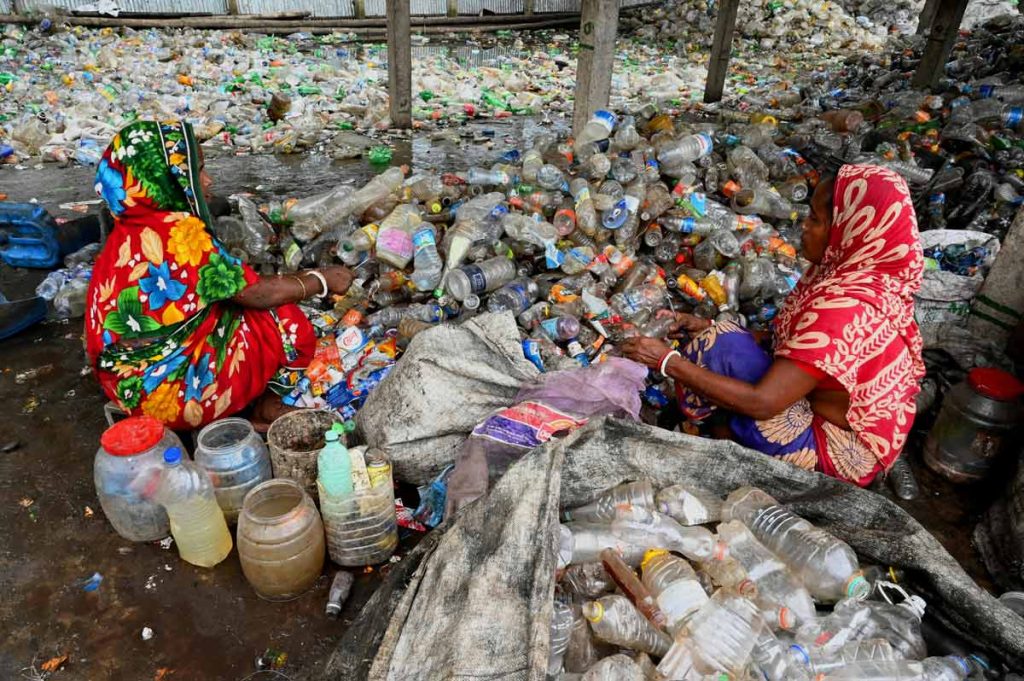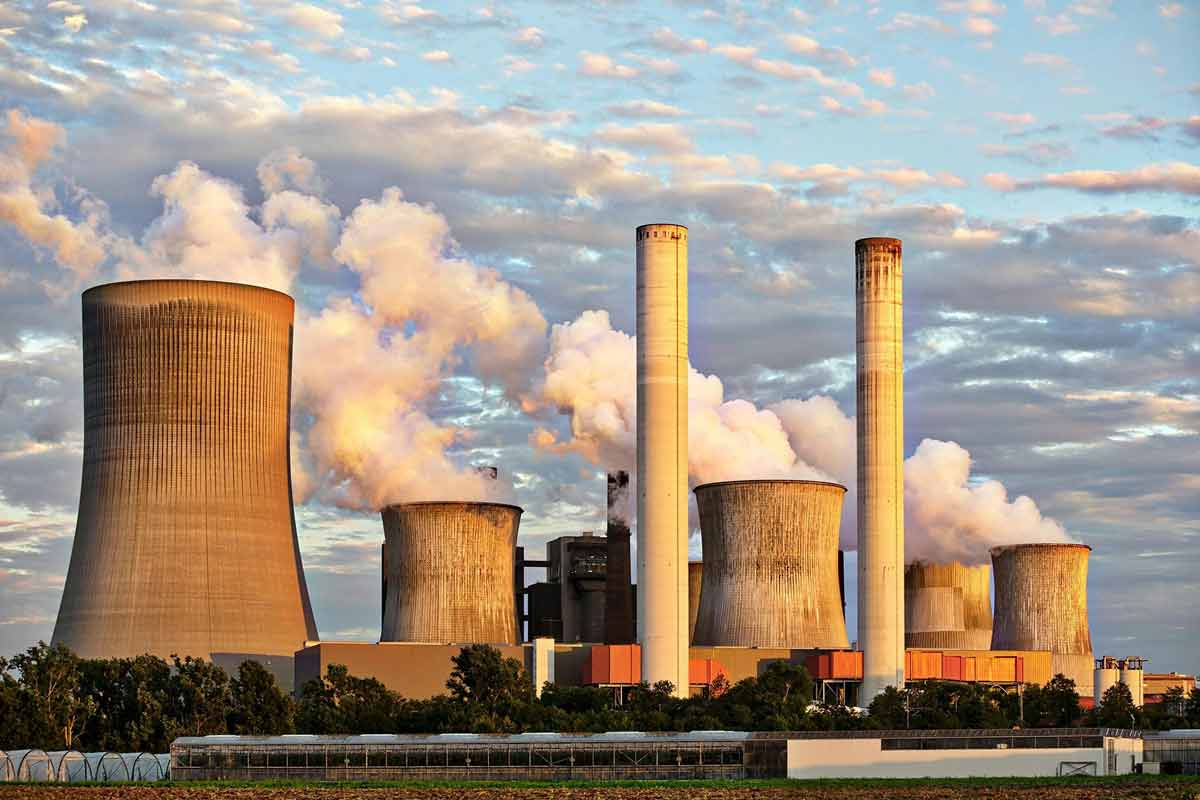Paragraph on Air Pollution
Air pollution poses a profound threat to both human health and environmental sustainability. Its detrimental impacts are widespread, affecting millions of lives worldwide. That’s why this paragraph on air pollution is very important.
The consequences of prolonged exposure to polluted air are dire, leading to a heightened risk of debilitating diseases such as stroke, heart disease, lung cancer, and respiratory ailments, including asthma.
Urgent action is imperative to address the root causes of air pollution, requiring concerted efforts across sectors such as transportation, energy, industry, and waste management. Through strategic policies and investments promoting cleaner technologies and sustainable practices, nations can mitigate the sources of outdoor air pollution and enhance access to clean household energy, thereby safeguarding public health and fostering a healthier, more sustainable future.
A table that will help you to write your air pollution paragraph.
| Reason for Air Pollution | Prevention Guide |
|---|---|
| Traffic-Related Air Pollution (TRAP) | Use public transportation, carpool, walk, or bike. Maintain vehicles properly and opt for electric or hybrid vehicles. Implement pollution control technologies in industries. Enforce emission standards. Promote cleaner production methods and invest in renewable energy sources. |
| Ground-Level Ozone | Reduce emissions from cars, power plants, industrial boilers, refineries, and other sources through the use of cleaner technologies and renewable energy sources. |
| Noxious Gases | Implement stricter regulations on motor vehicle emissions and industrial processes. Invest in cleaner fuels and technologies. |
| Particulate Matter (PM) | Control vehicle and industrial emissions by promoting cleaner combustion technologies and enforcing emission standards. Implement measures to reduce wildfires and control burning of organic matter. |
| Fine Particulate Matter (PM 2.5) | Implement measures to reduce emissions of PM 2.5 by controlling vehicle and industrial emissions and enforcing stricter regulations. Promote the use of cleaner fuels and technologies. |
| Volatile Organic Compounds (VOC) | Use low VOC products, promote the use of environmentally friendly paints and cleaning supplies, and invest in cleaner technologies in industries. Control emissions from gasoline and natural gas combustion. |
| Polycyclic Aromatic Hydrocarbons (PAH) | Regulate industrial processes to reduce emissions of PAHs. Invest in cleaner production methods and technologies. Control combustion processes to minimize the release of PAHs into the atmosphere. |
| Air Pollution and Climate Change | Implement policies to reduce emissions of greenhouse gases and air pollutants simultaneously. Invest in renewable energy sources and energy-efficient technologies to mitigate both air pollution and climate change. |
Short Paragraph About Air Pollution – 100 Words

Air pollution refers to the presence of harmful substances in the Earth’s atmosphere, which can pose health risks to humans, animals, and the environment. Various factors contribute to air pollution, including emissions from vehicles, industrial activities, burning fossil fuels, and agricultural practices. These activities release pollutants such as carbon monoxide, sulfur dioxide, nitrogen oxides, and particulate matter into the air, leading to respiratory problems, cardiovascular diseases, and environmental degradation.
To mitigate air pollution, individuals can adopt measures such as using public transportation, carpooling, reducing energy consumption, and supporting clean energy initiatives. Additionally, implementing stringent regulations on industries to reduce emissions and promoting the use of renewable energy sources are essential steps in combating air pollution and safeguarding the planet for future generations.
Air Pollution Paragraph 150 Words
Air pollution, a pressing environmental issue, encompasses the presence of harmful substances in the atmosphere, posing significant health and environmental risks. The primary contributors to air pollution are anthropogenic activities, including industrial processes, transportation, agricultural practices, and household activities.
Combustion of fossil fuels, such as coal, oil, and gas, releases pollutants like carbon monoxide, sulfur dioxide, nitrogen oxides, and particulate matter into the air, leading to respiratory diseases, cardiovascular complications, and ecosystem disruption. To combat air pollution, both individual and collective actions are imperative. Individuals can opt for sustainable transportation methods like walking, cycling, or using public transit, thereby reducing vehicular emissions. Moreover, energy conservation practices such as using energy-efficient appliances, minimizing electricity consumption, and embracing renewable energy sources like solar and wind power can significantly mitigate pollution levels.
At a societal level, governments must enforce stringent regulations on industries to limit emissions, promote the adoption of cleaner technologies, and invest in green infrastructure projects. Public awareness campaigns and educational initiatives are also crucial in fostering a culture of environmental responsibility and encouraging sustainable behaviors. By implementing comprehensive strategies encompassing technological advancements, policy interventions, and behavioral changes, society can effectively combat air pollution and pave the way for a healthier and more sustainable future.
Paragraph on Air Pollution – 200 Words
Air pollution, characterized by the presence of harmful substances in the Earth’s atmosphere, has emerged as a significant global challenge with far-reaching consequences. The primary sources of air pollution include industrial activities, vehicular emissions, agricultural practices, and domestic activities, all of which release a cocktail of pollutants into the air, including carbon monoxide, sulfur dioxide, nitrogen oxides, volatile organic compounds, and particulate matter. These pollutants not only degrade air quality but also pose serious health risks to humans, animals, and ecosystems, contributing to respiratory diseases, cardiovascular ailments, and environmental degradation. To address this multifaceted issue, a holistic approach encompassing various strategies is imperative.
Prevention strategies for air pollution range from individual actions to collective initiatives. At the individual level, adopting sustainable practices such as using public transportation, carpooling, biking, or walking can significantly reduce personal carbon footprint and vehicular emissions. Energy conservation measures, including reducing electricity consumption, optimizing heating and cooling systems, and investing in energy-efficient appliances, are also effective in curbing pollution levels. Furthermore, promoting the use of clean energy sources such as solar, wind, and hydropower can mitigate reliance on fossil fuels and decrease greenhouse gas emissions.
On a broader scale, governmental intervention plays a crucial role in combating air pollution. Implementing stringent environmental regulations, setting emission standards for industries, and incentivizing the adoption of cleaner technologies are essential steps in reducing pollution levels. Investing in public transportation infrastructure, expanding green spaces, and establishing emission-free zones in urban areas can help mitigate vehicular emissions and improve air quality. Additionally, fostering international cooperation and knowledge sharing on air pollution control strategies can facilitate the development of comprehensive solutions to this global issue.
Educational initiatives and public awareness campaigns are also instrumental in promoting environmental stewardship and encouraging behavioral changes. By empowering individuals with knowledge about the causes and consequences of air pollution, society can mobilize collective action towards sustainable living practices and environmental conservation. Ultimately, addressing air pollution requires concerted efforts from governments, industries, communities, and individuals alike to safeguard public health, protect ecosystems, and ensure a sustainable future for generations to come.
Air Pollution Paragraph For Class 10- 250 Words+
Air pollution, a pervasive environmental issue, stems from a complex interplay of various sources, including solid and liquid particles as well as certain gases suspended in the atmosphere. These pollutants originate from a myriad of human activities and natural phenomena, each contributing to the degradation of air quality and posing significant health and environmental risks. Among the primary sources of air pollution are vehicular emissions, industrial activities, dust from construction sites, pollen from plants, mold spores, volcanic eruptions, and wildfires. These sources release a diverse array of pollutants into the air, including carbon monoxide, sulfur dioxide, nitrogen oxides, volatile organic compounds, and particulate matter.
One of the major contributors to air pollution is the combustion of fossil fuels in vehicles, leading to the emission of harmful gases such as carbon monoxide and nitrogen oxides, as well as particulate matter. Additionally, industrial processes release a plethora of pollutants into the air, including sulfur dioxide and volatile organic compounds, further exacerbating air quality issues. Dust from construction sites and unpaved roads also adds to the particulate matter suspended in the air, contributing to respiratory problems and reduced visibility.
Natural sources of air pollution, such as volcanic eruptions and wildfires, release large quantities of pollutants into the atmosphere, including sulfur dioxide, ash, and particulate matter. While these events are sporadic, they can have significant regional and even global impacts on air quality and climate. Pollen from plants and mold spores are also common allergens that contribute to air pollution, particularly during certain seasons.
The solid and liquid particles suspended in the air, collectively known as aerosols, play a crucial role in air pollution. These aerosols can range in size from tiny particles to larger droplets and can be composed of various materials, including pollutants emitted from human activities and natural sources. Aerosols not only contribute to poor air quality but also have implications for climate change, as they can scatter and absorb solar radiation, influencing the Earth’s energy balance.
Addressing air pollution requires a multifaceted approach that encompasses regulatory measures, technological advancements, public policies, and individual actions. Governments must enforce strict emissions standards for industries and vehicles, invest in clean energy alternatives, and promote sustainable transportation solutions such as public transit and electric vehicles. Furthermore, fostering public awareness and education about the causes and consequences of air pollution is essential in mobilizing collective action and promoting behavior change. By making concerted efforts to reduce air pollution, society can protect public health, preserve ecosystems, and mitigate the impacts of climate change, ensuring a cleaner and healthier environment for current and future generations.
Some Word Meanings from My Easy Air Pollution Paragraph
| Hard Word | Meaning |
|---|---|
| Anthropogenic | Originating from human activity; relating to the influence of human beings on nature. |
| Interplay | The process of burning something; is the chemical reaction that occurs when a substance reacts with oxygen to produce heat and light. |
| Multifaceted | Having many different aspects or facets; complex. |
| Pervasive | Spreading widely throughout an area or group of people; prevalent. |
| Combustion | The process of burning something; the chemical reaction that occurs when a substance reacts with oxygen to produce heat and light. |
| Aerosols | Solid or liquid particles suspended in the air, such as dust, smoke, and pollution. |
| Mitigate | To make something less severe, harmful, or painful; alleviate or reduce. |
| Stewardship | The responsible overseeing and protection of something considered worth caring for and preserving, such as the environment. |
| Conducive | Making a certain situation or outcome likely or possible; favorable or helpful. |
| Sporadic | Occurring irregularly or intermittently; not constant or predictable. |
| Ecosystem | A community of living organisms (plants, animals, and microbes) in conjunction with the nonliving components of their environment (such as air, water, and mineral soil), interacting as a system. |
| Stipulate | To specify or demand something as part of an agreement or condition. |
| Intricately | In a complex or detailed manner; with many interconnected parts. |
| Exacerbating | Making a problem, bad situation, or negative feeling worse. |
| Allergens | Substances that cause allergic reactions in sensitive individuals. |
| Stochastic | Randomly determined; involving a random variable. |
| Carcinogens | Substances capable of causing cancer. |
| Evacuation | The act of moving people from a dangerous place to a safe place. |
| Combustion | The process of burning something; the chemical reaction that occurs when a substance reacts with oxygen to produce heat and light. |
| Intricately | In a complex or detailed manner; with many interconnected parts. |
What Exactly Pollutes Air?

| Pollutant | Description |
|---|---|
| Ground-Level Ozone | Formed when pollutants from cars, power plants, industrial boilers, refineries, and other sources react in the presence of sunlight; often referred to as smog. |
| Carbon Monoxide (CO) | Colorless, odorless gas produced by incomplete combustion of carbon-containing fuels such as gasoline, natural gas, and wood. |
| Nitrogen Oxides (NOx) | Family of gases consisting of nitrogen and oxygen compounds; produced by combustion processes in vehicles and industrial facilities. |
| Sulfur Dioxide (SO2) | Colorless gas with a pungent odor, primarily produced by burning fossil fuels containing sulfur, such as coal and oil; a major air pollutant from industrial processes. |
| Particulate Matter (PM) | Organic chemicals that have a high vapor pressure at room temperature, contribute to the formation of ground-level ozone and smog; emitted from various sources. |
| Volatile Organic Compounds (VOCs) | Organic chemicals that have a high vapor pressure at room temperature, contributing to the formation of ground-level ozone and smog; emitted from various sources. |
| Polycyclic Aromatic Hydrocarbons (PAHs) | Group of chemicals formed during incomplete combustion of organic matter such as coal, oil, gas, and wood; present in vehicle exhaust and industrial emissions. |
What Are The Health Risks of Air Pollution?
In this table I talked about the Health Impacts of Air Pollution.

| Health Risks | Description |
|---|---|
| Respiratory Problems | Irritation of the respiratory tract, exacerbation of asthma and other respiratory conditions, increased risk of respiratory infections. |
| Cardiovascular Diseases | Increased risk of heart attacks, strokes, and other cardiovascular diseases due to inflammation, reduced oxygen delivery, and formation of blood clots. |
| Cancer | Exposure to carcinogenic pollutants such as polycyclic aromatic hydrocarbons (PAHs) increases the risk of developing various types of cancer. |
| Neurological Effects | Cognitive impairment, neurodevelopmental disorders in children, and increased risk of neurological diseases such as Alzheimer’s and Parkinson’s disease. |
| Reproductive Issues | Reduced fertility, pregnancy complications, birth defects, and impaired fetal development due to exposure to air pollutants during pregnancy. |
| Premature Mortality | Shortened life expectancy and increased mortality rates, particularly among vulnerable populations such as children, the elderly, and those with pre-existing conditions. |
| Allergic Reactions | Exacerbation of allergies and allergic reactions due to exposure to allergens and irritants present in polluted air. |
| Eye Irritation | Redness, itching, and irritation of the eyes caused by exposure to pollutants such as particulate matter, ozone, and volatile organic compounds (VOCs). |
| Skin Disorders | Skin irritation, inflammation, and exacerbation of dermatological conditions such as eczema and psoriasis due to contact with air pollutants. |
| Mental Health Impacts | Increased risk of depression, anxiety, and stress-related disorders due to the psychological effects of living in environments with poor air quality. |
Synonyms and Antonyms of Pollution
| Synonyms | contamination, contaminating, adulteration, adulterating, tainting, impurity, fouling, befouling, foulness, dirtiness, dirtying, soiling, filthiness, infection, infecting, defilement, corruption, corrupting, poison |
| Antonym | purity |
Air Pollution Synopsis
Air pollution is a pervasive environmental issue resulting from the release of harmful substances into the atmosphere. These pollutants, which include gases, particulate matter, and chemicals, originate from various sources such as vehicular emissions, industrial activities, and natural events like wildfires. The detrimental effects of air pollution are wide-ranging and impact human health, ecosystems, and the environment. Exposure to polluted air can lead to respiratory problems, cardiovascular diseases, and even cancer, particularly affecting vulnerable populations. Moreover, air pollution contributes to environmental degradation, including acid rain, smog formation, and climate change. To mitigate air pollution, concerted efforts are needed, including regulatory measures, technological innovations, and public awareness campaigns. Sustainable practices such as transitioning to cleaner energy sources, reducing emissions from transportation and industries, and promoting green infrastructure are essential steps towards improving air quality and safeguarding the health of both people and the planet.
Conclusion
In summary, the paragraph on air pollution underscores the critical importance of addressing this pressing environmental issue. By highlighting the diverse sources of air pollution, ranging from vehicular emissions to industrial activities and natural phenomena, the paragraph elucidates the multifaceted nature of the problem. Furthermore, it emphasizes the far-reaching consequences of air pollution, including adverse effects on public health, ecosystems, and climate.
The paragraph also underscores the necessity of collective action and cooperation at various levels to mitigate air pollution, from implementing regulations and investing in cleaner technologies to fostering public awareness and education. Overall, it serves as a poignant reminder of the urgent need to prioritize environmental sustainability and take proactive measures to combat air pollution for the well-being of current and future generations.







